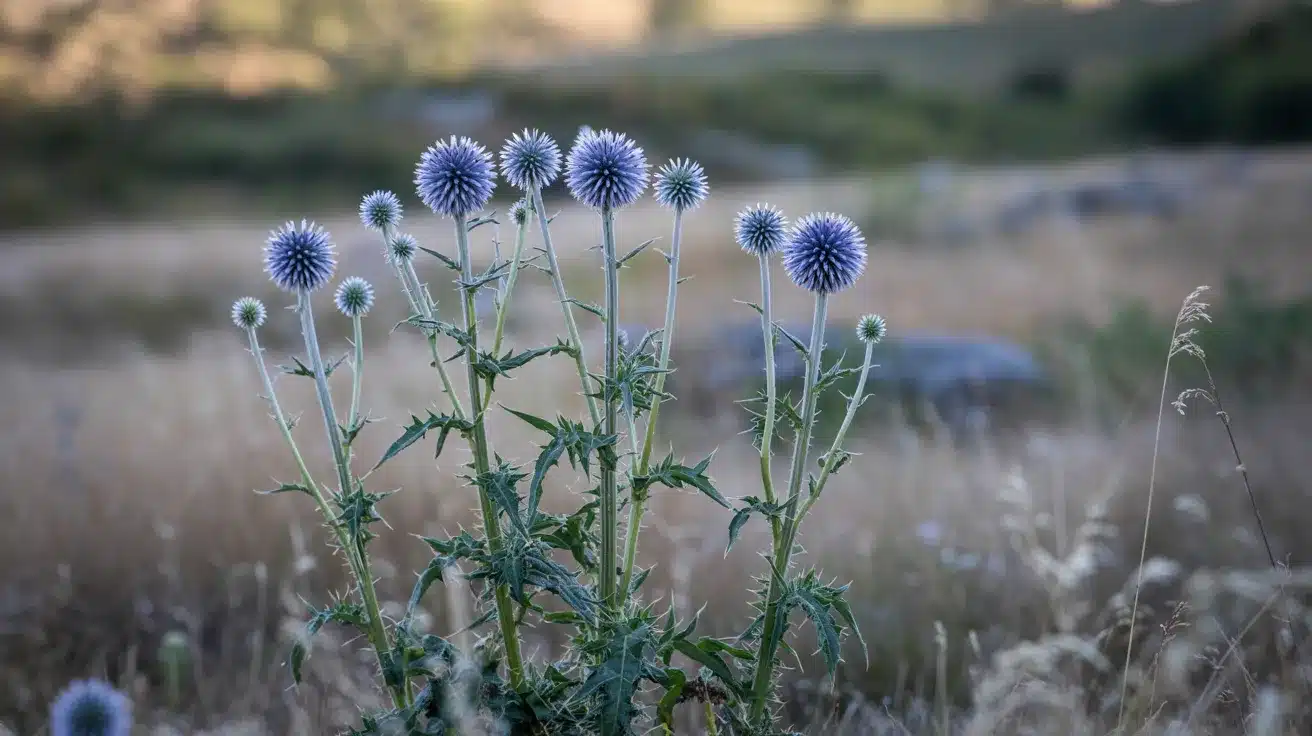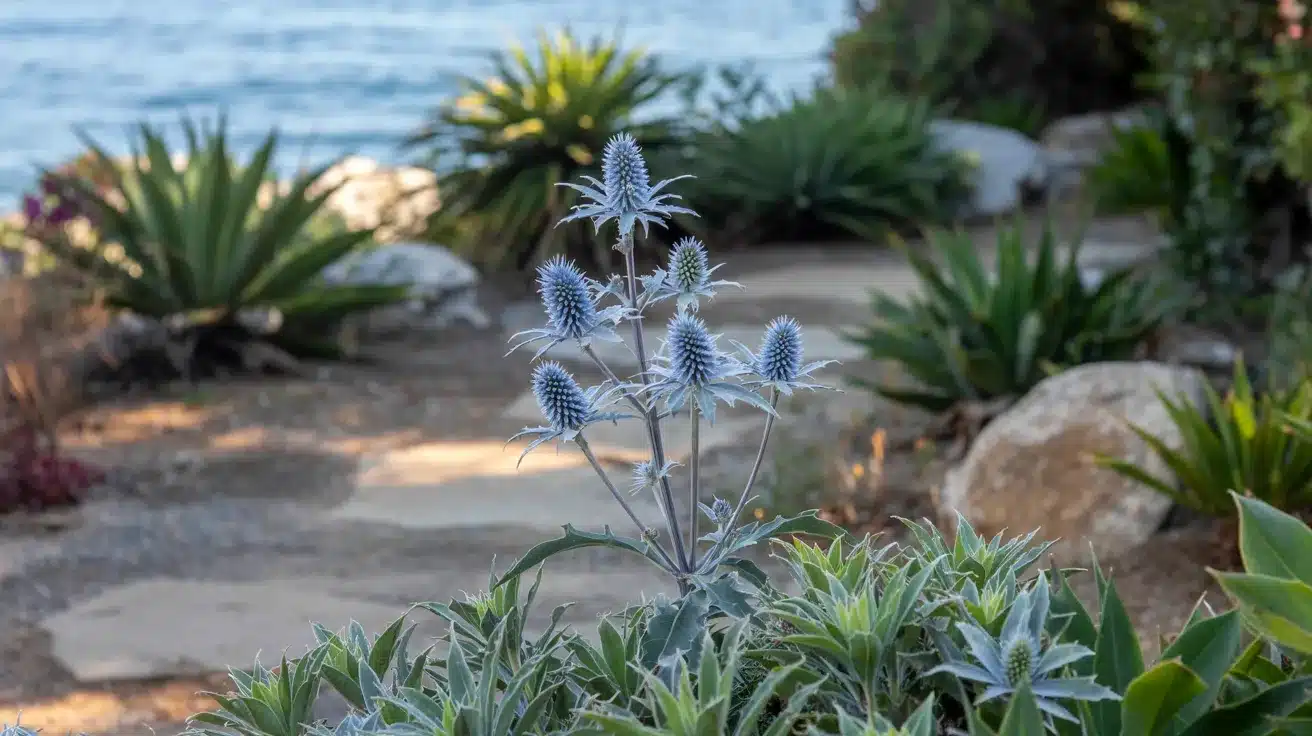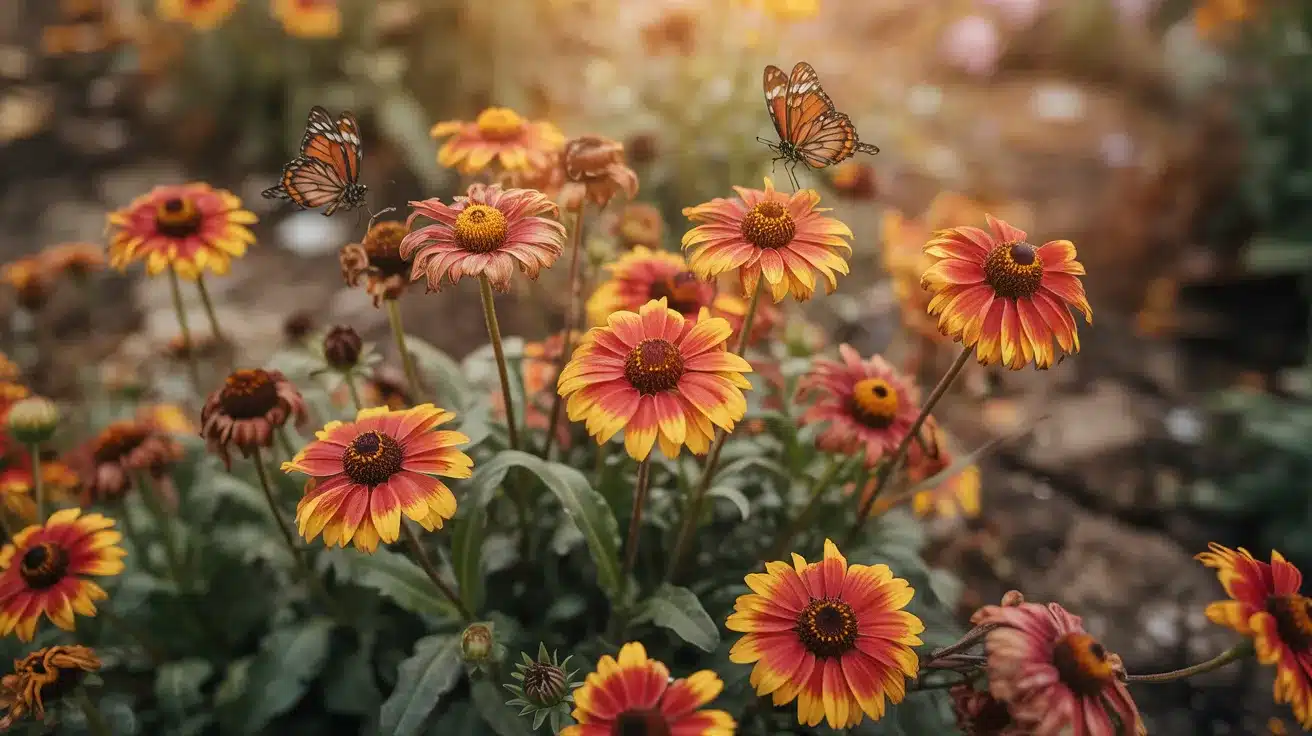Do you love bright colors but struggle with plants that wilt in intense heat? I used to think my sunny garden was doomed to brown grass and dying petunias. Then I found Mediterranean flowers.
These sun-loving beauties thrive in hot, dry conditions while bringing stunning purples, yellows, and reds to your outdoor space. From lavender’s calming scent to bougainvillea’s bold displays, these plants prefer the challenging conditions that kill other flowers.
In this guide, I’ll share the top Mediterranean varieties that change harsh sunny spots into colorful retreats.
You’ll learn which flowers work best for your climate and how to create a low-maintenance garden that blooms all season long.
The Natural Appeal of Mediterranean Flora
Mediterranean flowers come from areas with hot, dry summers and mild winters. This makes them perfect for gardens that face similar conditions. Unlike many traditional garden plants, these beauties prefer less water and more sun.
The region includes countries like Spain, Italy, Greece, and southern France. Each area contributes unique flowering plants that have adapted to harsh sunlight and poor soil. These plants developed thick leaves, deep roots, and other features that help them survive tough conditions.
Benefits for Modern Gardens
Adding Mediterranean plants to your garden brings several advantages:
- Heat Tolerance : These flowers love full sun and won’t droop during hot afternoons. They keep their color and shape even when temperatures soar.
- Water Efficiency : Most Mediterranean plants need less water once established. This saves time on watering and reduces your water bills.
- Long Blooming Seasons : Many varieties flower from spring through fall. Some even bloom in winter in milder climates.
- Natural Pest Resistance : These plants often have natural oils and compounds that keep harmful insects away.
- Low Maintenance : Most Mediterranean flowers require minimal care once they settle into your garden.
Top 21 Mediterranean Flowers to Cultivate
Mediterranean flowers bring stunning color and fragrance to sunny gardens while requiring minimal water and care. These hardy plants have adapted to thrive in hot, dry conditions where other flowers struggle to survive.
1. Lavender (Lavandula spp.)
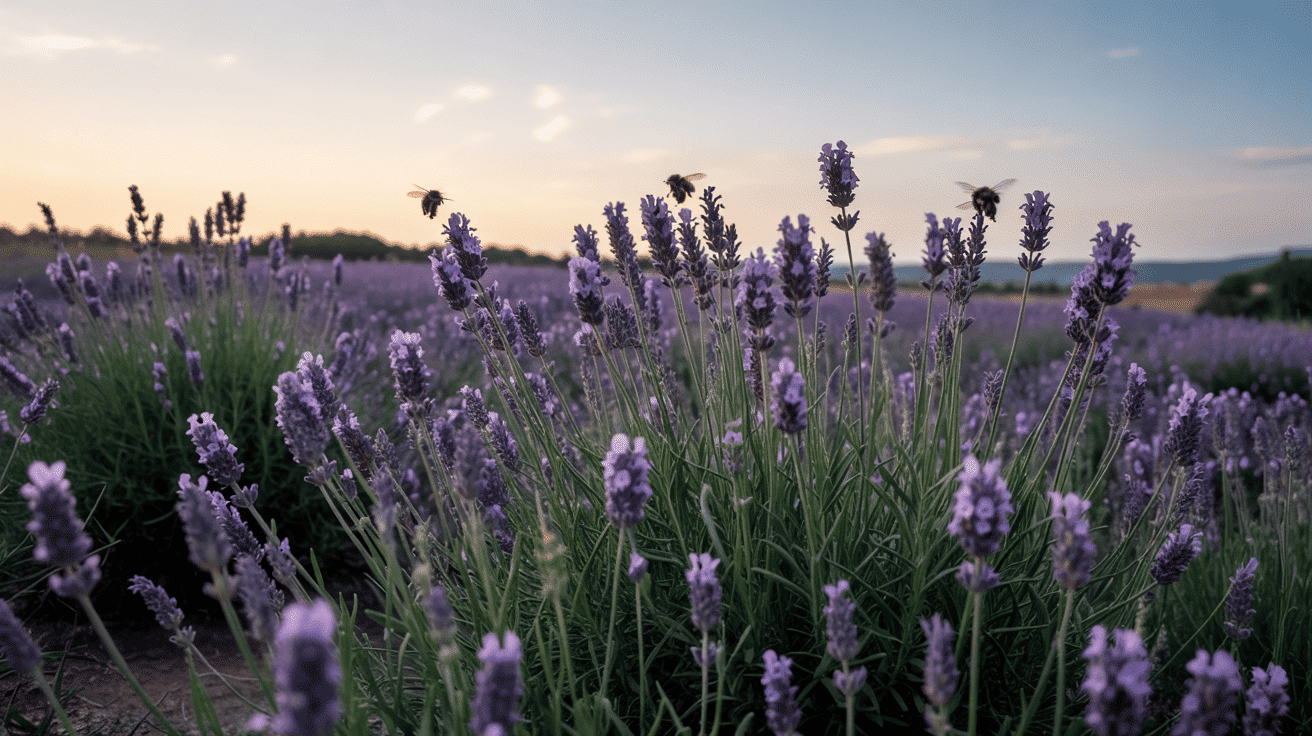
Lavender stands as the most recognizable Mediterranean flower, known worldwide for its calming fragrance and silvery-purple blooms. This hardy perennial produces fragrant oil used in perfumes, soaps, and aromatherapy products.
- Climate: Thrives in USDA zones 5-10 with excellent heat and drought tolerance.
- Blooming Months: June through August, with some varieties blooming into fall.
- Appearance: Silver-green foliage with tall purple flower spikes reaching 1-3 feet.
- Gardening Strategy: Plant lavender in gravelly or sandy soil with excellent drainage. Water deeply once weekly during the first year, then reduce to monthly watering. Prune after flowering to maintain a compact shape. Space plants 2-3 feet apart for good air circulation.
2. Bougainvillea (Bougainvillea Spectabilis)
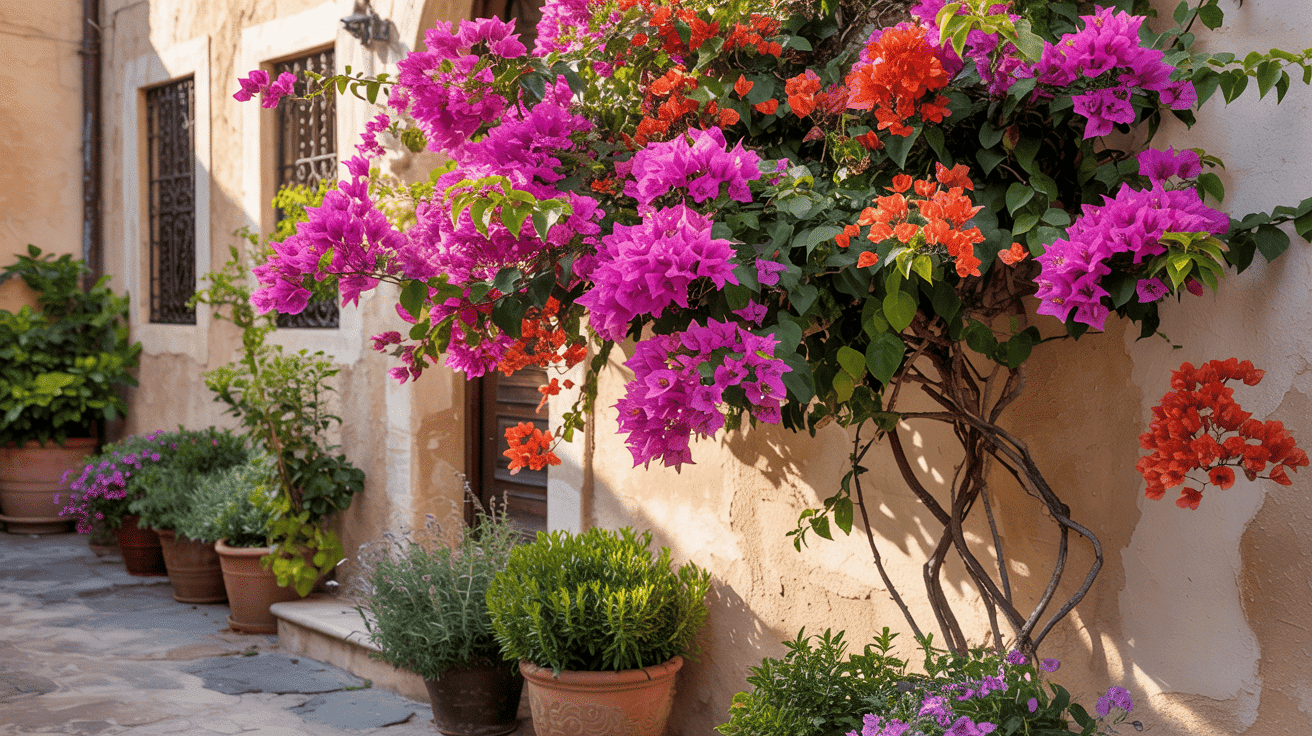
Bougainvillea creates stunning displays with its papery, colorful bracts that surround tiny white flowers. This vigorous climber can cover walls, fences, and arbors with brilliant color for most of the year in warm climates.
- Climate: Hardy in zones 9-11, needs protection from frost.
- Blooming Months: Nearly year-round in warm climates, spring through fall elsewhere.
- Appearance: Bright magenta, purple, red, orange, or white papery bracts with small thorns.
- Gardening Strategy: Plant against south-facing walls for maximum heat. Use poor soil to prevent excessive leaf growth at expense of flowers. Water sparingly once established – stress promotes better blooming. Prune after flowering and protect from frost with burlap covers.
3. Rosemary (Rosmarinus Officinalis)
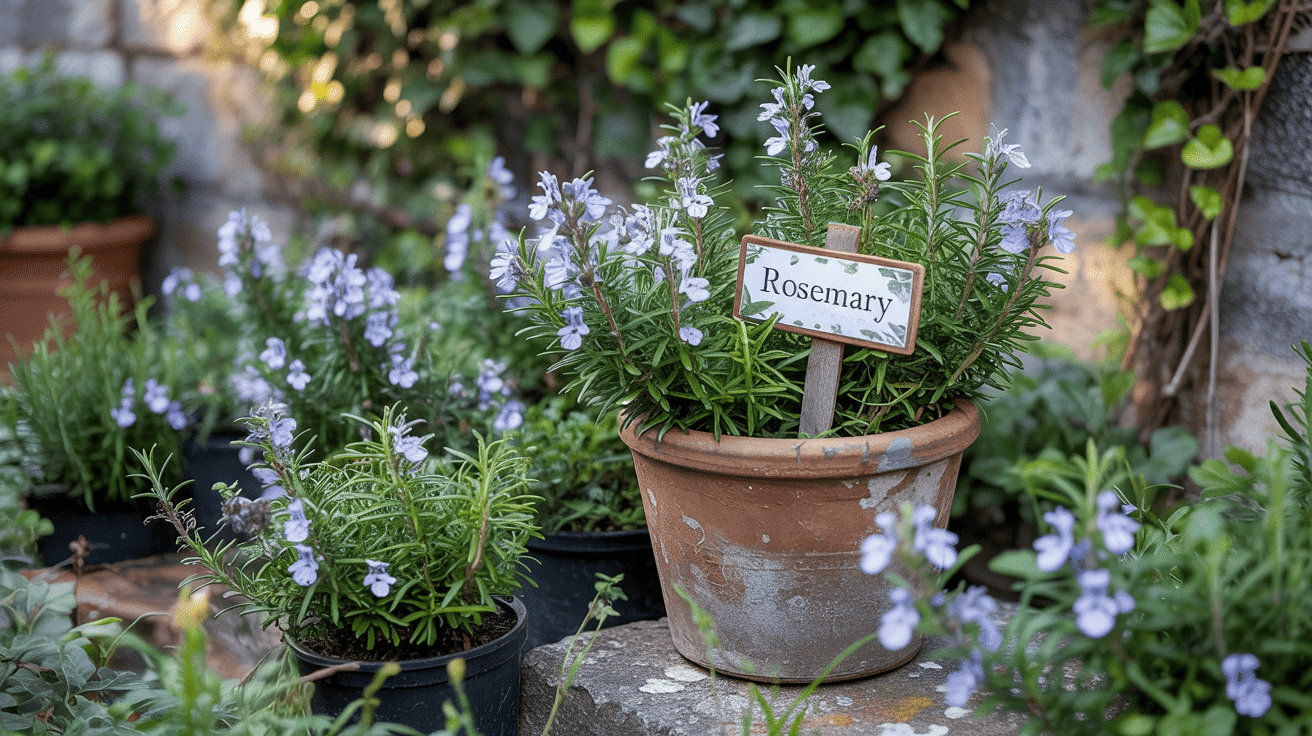
Rosemary serves dual purposes as both a culinary herb and an ornamental flowering plant. Its needle-like leaves release a strong pine-like fragrance when brushed against, and it produces small but abundant flowers.
- Climate: Grows well in zones 7-10 with good cold tolerance.
- Blooming Months: Winter through spring, sometimes year-round.
- Appearance: Dark green needle-like leaves with small blue, purple, pink, or white flowers.
- Gardening Strategy: Choose upright varieties for hedges or trailing types for slopes. Never overwater – allow soil to dry between waterings. Harvest regularly to encourage new growth. Mulch roots in winter in colder zones. Avoid fertilizing as it reduces essential oil production.
4. Oleander (Nerium Oleander)
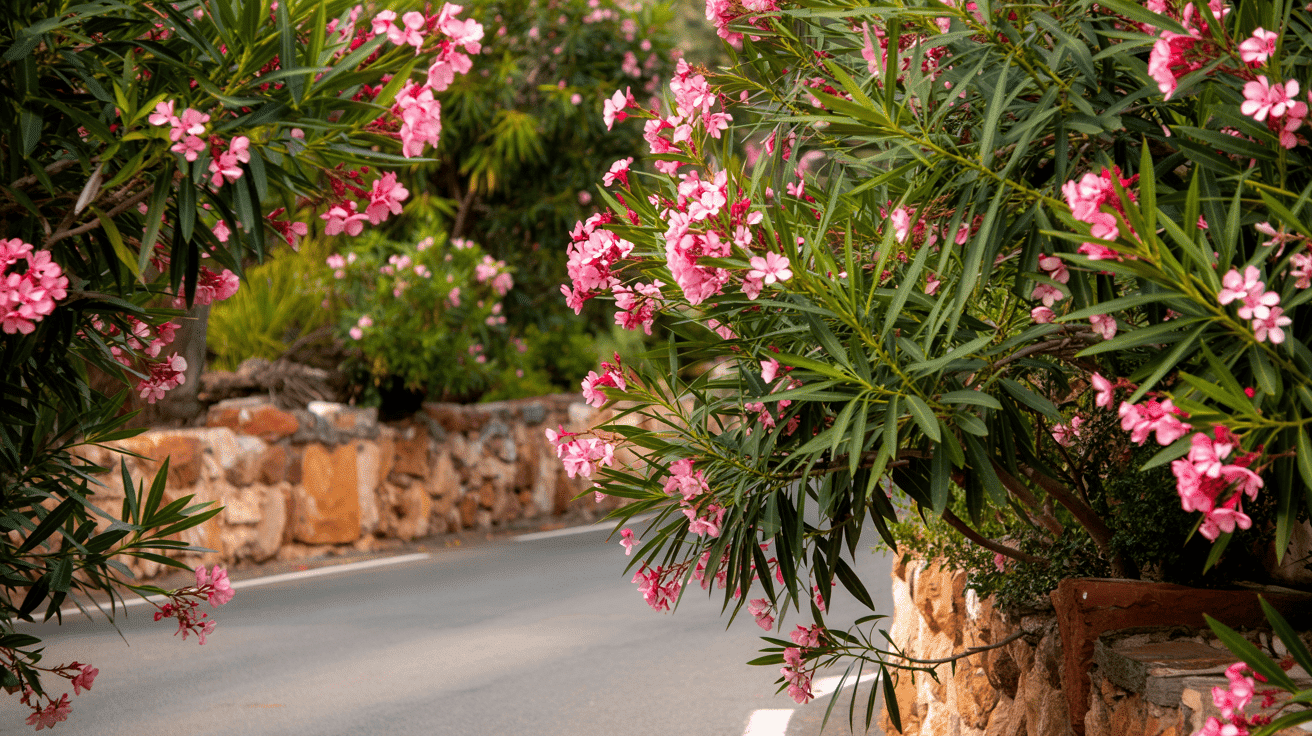
Oleander produces abundant clusters of showy flowers on evergreen shrubs that handle extreme heat and drought. Despite its beauty, all parts of this plant contain toxic compounds that make it deer and pest resistant.
- Climate: Thrives in zones 8-10 with excellent heat tolerance.
- Blooming Months: Spring through fall with peak summer blooming.
- Appearance: Leathery dark green leaves with clusters of pink, white, red, or yellow flowers.
- Gardening Strategy: Perfect for highway medians and difficult spots. Water deeply monthly once established. Prune dead flowers to extend blooming. Choose dwarf varieties for small spaces. Always wear gloves when handling due to toxicity. Excellent for coastal gardens.
5. Geraniums (Pelargonium spp.)
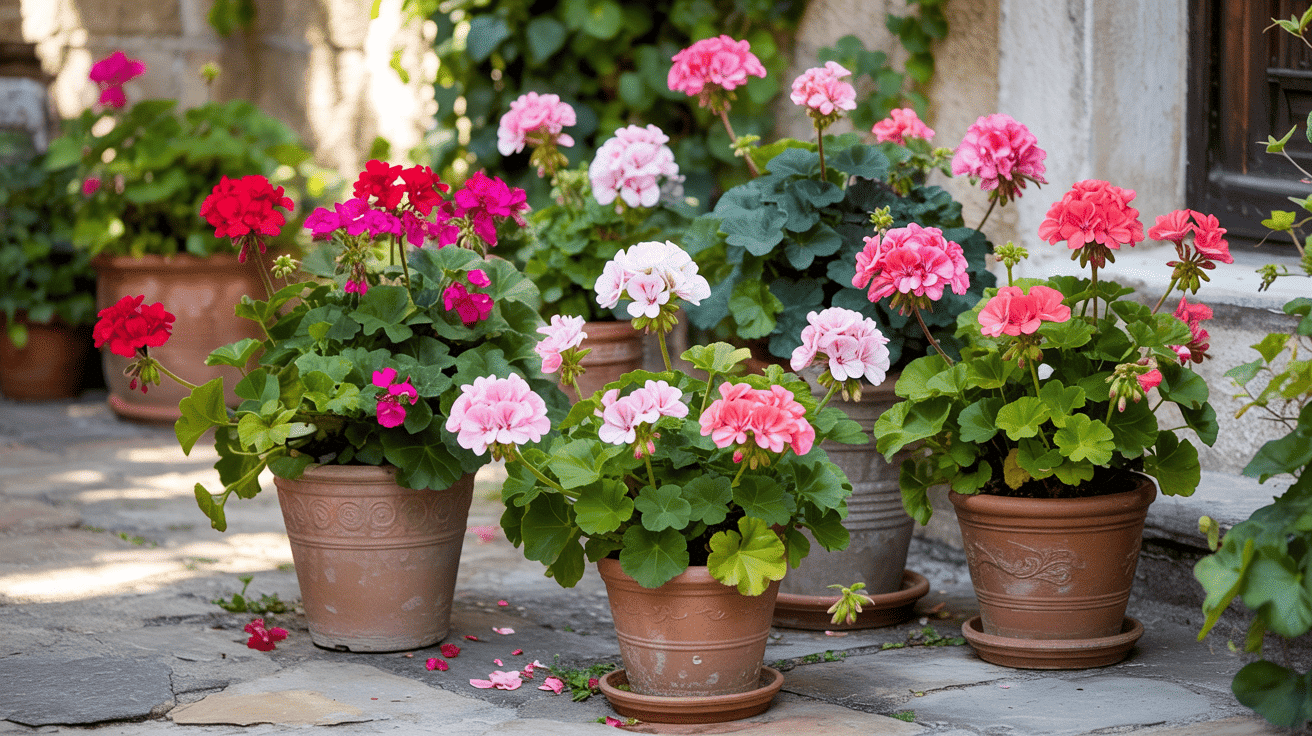
Mediterranean geraniums differ from common bedding geraniums, offering stronger drought tolerance and more intense fragrances. These perennials produce continuous blooms throughout warm weather with minimal care.
- Climate: Hardy in zones 9-10, grown as annuals elsewhere.
- Blooming Months: Spring through fall, winter in mild climates.
- Appearance: Rounded or deeply cut leaves with five-petaled flowers in various colors.
- Gardening Strategy: Pinch growing tips to encourage bushy growth. Remove spent flowers weekly for continuous blooms. Take cuttings in fall for overwintering indoors. Group different scented varieties near seating areas. Water at the soil level to prevent leaf diseases.
6. Rock Rose (Cistus spp.)
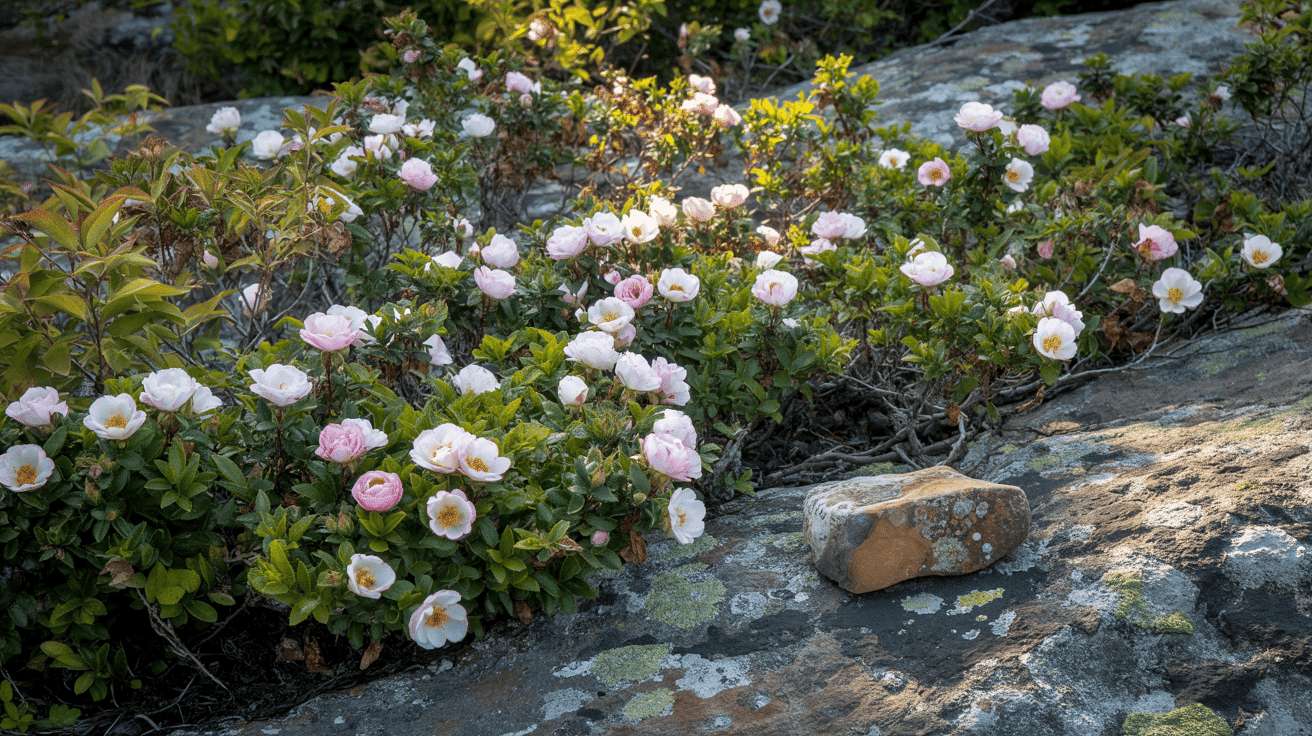
Rock rose produces papery flowers that last only one day but bloom continuously throughout spring and early summer. These compact shrubs handle extreme drought and poor soil conditions better than most flowering plants.
- Climate: Best in zones 8-10 with moderate frost tolerance.
- Blooming Months: April through June with intensive flowering period.
- Appearance: Gray-green leaves with white, pink, or purple papery flowers.
- Gardening Strategy: Never move once established as they resent root disturbance. Plant in spring in well-draining slopes or rock gardens. Collect seeds after flowering for natural propagation. Avoid watering during summer dormancy period. Prune lightly after flowering if needed.
7. Mediterranean Spurge (Euphorbia Characias)
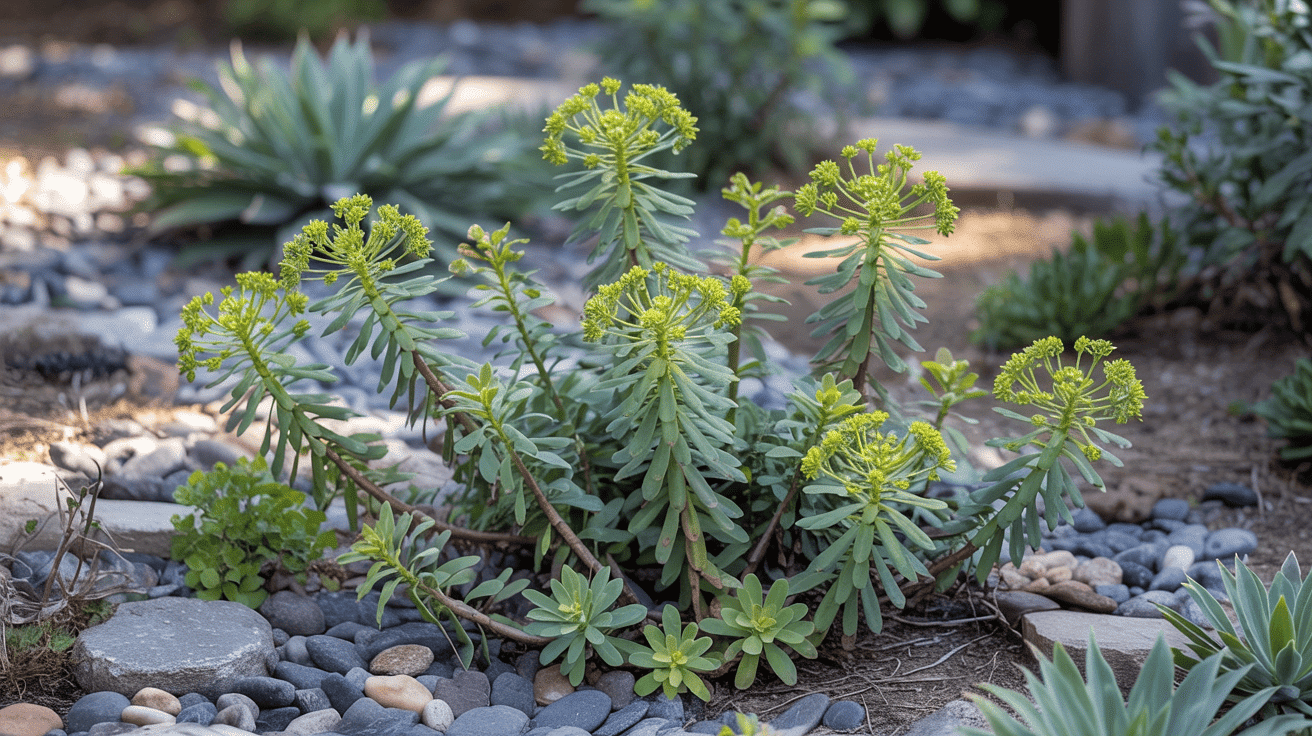
Mediterranean spurge creates architectural interest with its tall stems topped by distinctive lime-green flower clusters. This drought-tolerant perennial adds structure and year-round interest to sunny gardens.
- Climate: Hardy in zones 7-10 with good heat tolerance.
- Blooming Months: Late winter through early summer.
- Appearance: Blue-green leaves with tall stems bearing chartreuse flower clusters.
- Gardening Strategy: Cut stems to ground after flowering to encourage new growth. Wear gloves when handling as sap can irritate skin. Self-seeds readily – remove unwanted seedlings. Plant on slopes or raised beds for better drainage. Combine with ornamental grasses for contrast.
8. Catmint (Nepeta × Faassenii)
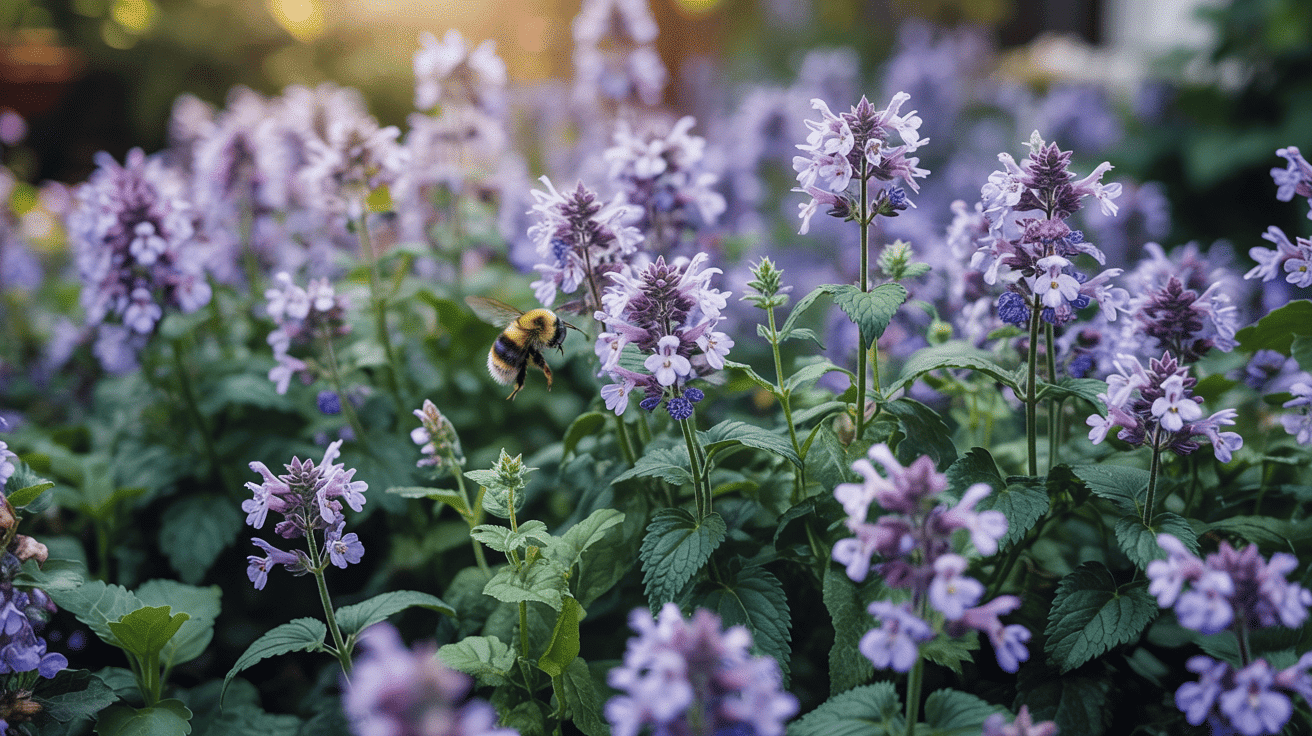
Catmint produces clouds of small blue-purple flowers that attract bees and butterflies while repelling mosquitoes and other pests. This hardy perennial blooms repeatedly throughout the growing season with proper care.
- Climate: Extremely hardy in zones 3-9 with excellent drought tolerance.
- Blooming Months: Late spring through fall with multiple bloom cycles.
- Appearance: Gray-green aromatic foliage with spikes of small blue-purple flowers.
- Gardening Strategy: Cut back by half after first bloom for second flowering. Divide clumps every 3-4 years in spring. Plant near vegetables as natural pest deterrent. Deadhead regularly for continuous blooms. Provides excellent border edging with lavender.
9. Poppies (Papaver spp.)
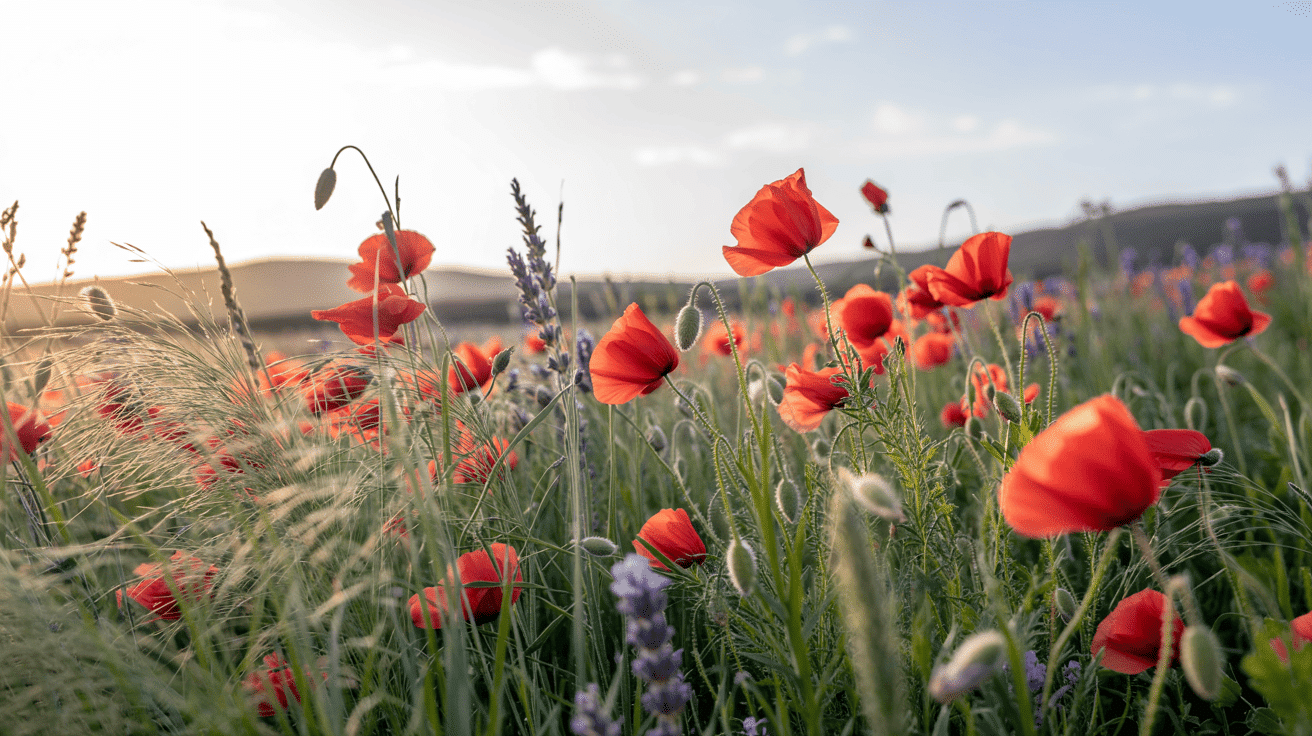
Mediterranean poppies create brilliant displays of papery flowers in intense colors that glow in bright sunlight. These annuals self-seed readily and naturalize in suitable growing conditions.
- Climate: Cool season annuals that handle light frost.
- Blooming Months: Spring through early summer before heat intensifies.
- Appearance: Feathery blue-green foliage with large papery flowers in bright colors.
- Gardening Strategy: Direct sow seeds in fall or early spring as they dislike transplanting. Scatter seeds over prepared soil and barely cover. Allow some plants to go to seed for next year’s display. Plant in drifts for best visual impact. Water sparingly once seedlings establish.
10. Jerusalem Sage (Phlomis Fruticosa)
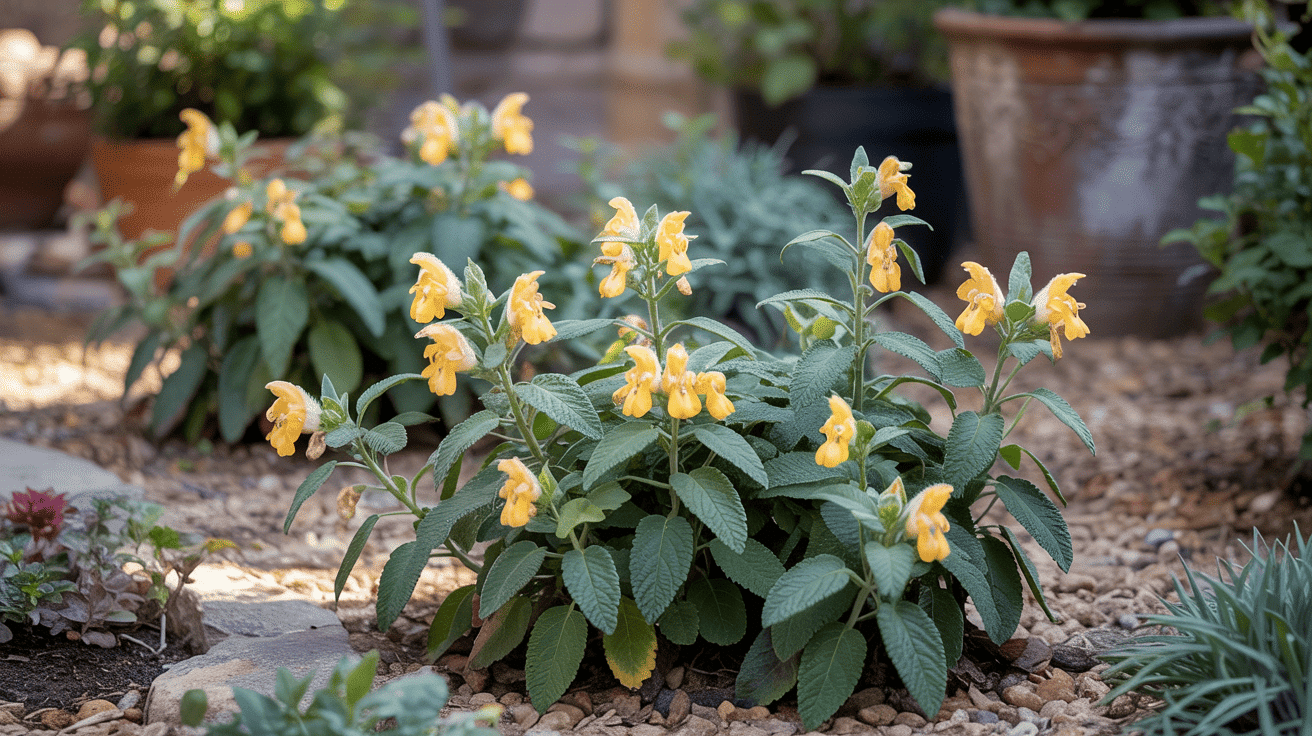
Jerusalem sage produces distinctive whorled yellow flowers on sturdy stems above silvery-gray foliage. This drought-tolerant shrub maintains its attractive form and color through challenging growing conditions.
- Climate: Thrives in zones 7-10 with good heat and drought tolerance.
- Blooming Months: Late spring through early summer.
- Appearance: Woolly gray-green leaves with bright yellow hooded flowers in tiers.
- Gardening Strategy: Plant in groups of three for best impact. Cut flower stems for drying just as flowers open. Prune lightly after flowering to maintain shape. Excellent for xerophytic gardens with other gray-leaved plants. Water only during the establishment period.
11. Spanish Lavender (Lavandula Stoechas)
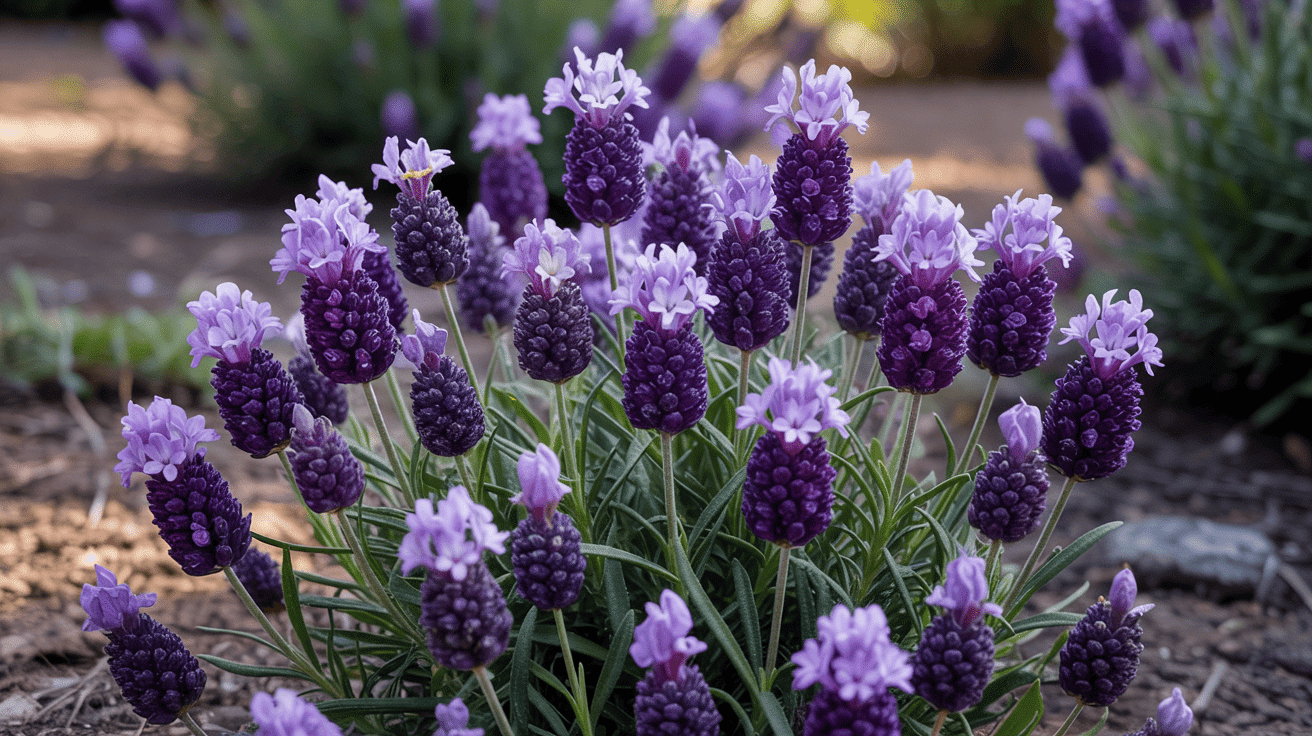
Spanish lavender differs from common lavender with its distinctive pineapple-shaped flower heads topped by colorful bracts. This compact variety handles heat and humidity better than other lavender types.
- Climate: Best in zones 8-10 with good heat tolerance.
- Blooming Months: Spring through fall with proper care.
- Appearance: Narrow gray-green leaves with purple flower heads topped by purple bracts.
- Gardening Strategy: Perfect for containers and small spaces. Prune lightly after each bloom cycle for continuous flowering. Better choice than English lavender in humid climates. Plant in raised beds for improved drainage. Harvest flowers for potpourri when fully open.
12. Santolina (Santolina Chamaecyparissus)
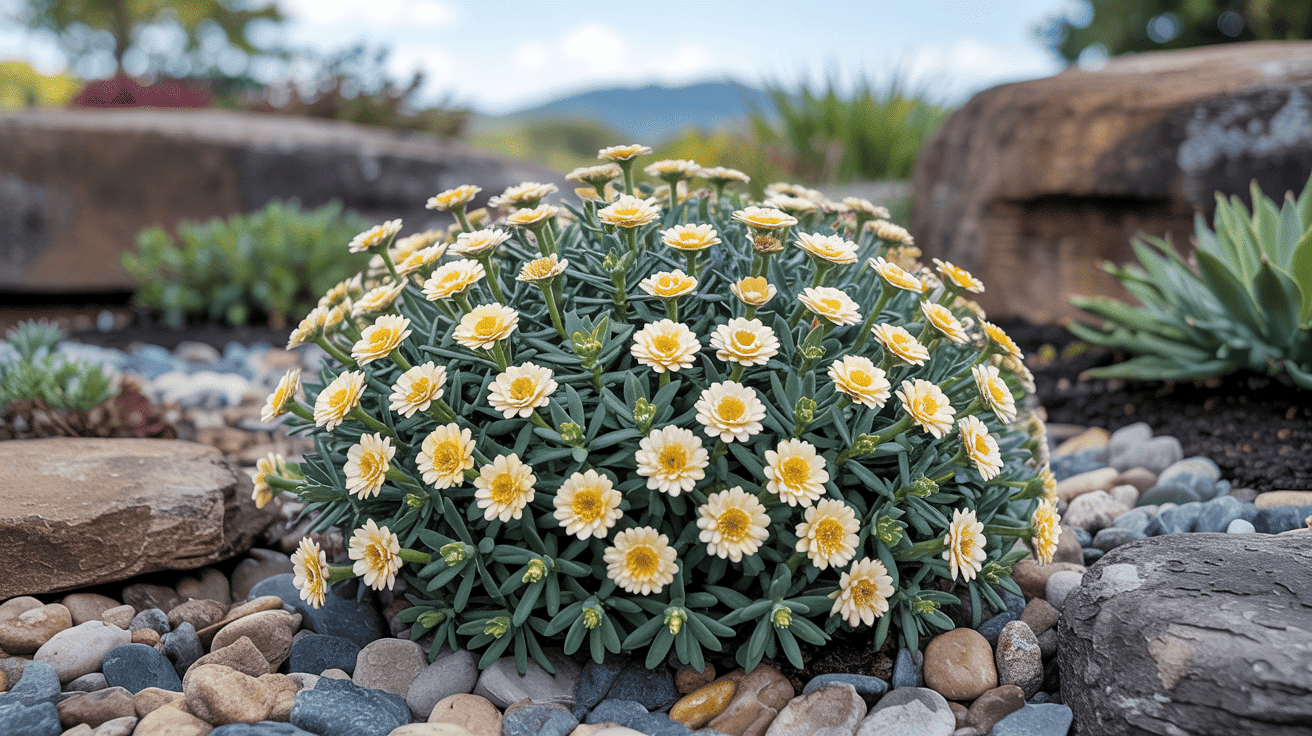
Santolina forms neat mounds of silver-gray foliage that contrasts beautifully with its bright yellow button flowers. This compact shrub maintains its form year-round and handles severe drought conditions.
- Climate: Hardy in zones 6-9 with excellent drought tolerance.
- Blooming Months: Summer months with peak bloom in midsummer.
- Appearance: Finely divided silver-gray leaves with bright yellow button-like flowers.
- Gardening Strategy: Shear into formal shapes for hedge work. Pinch flower buds if growing primarily for foliage effect. Divide old clumps every 4-5 years. Excellent for knot gardens and formal herb plantings. Cut back hard in early spring to maintain compact form.
13. Salvia (Salvia spp.)
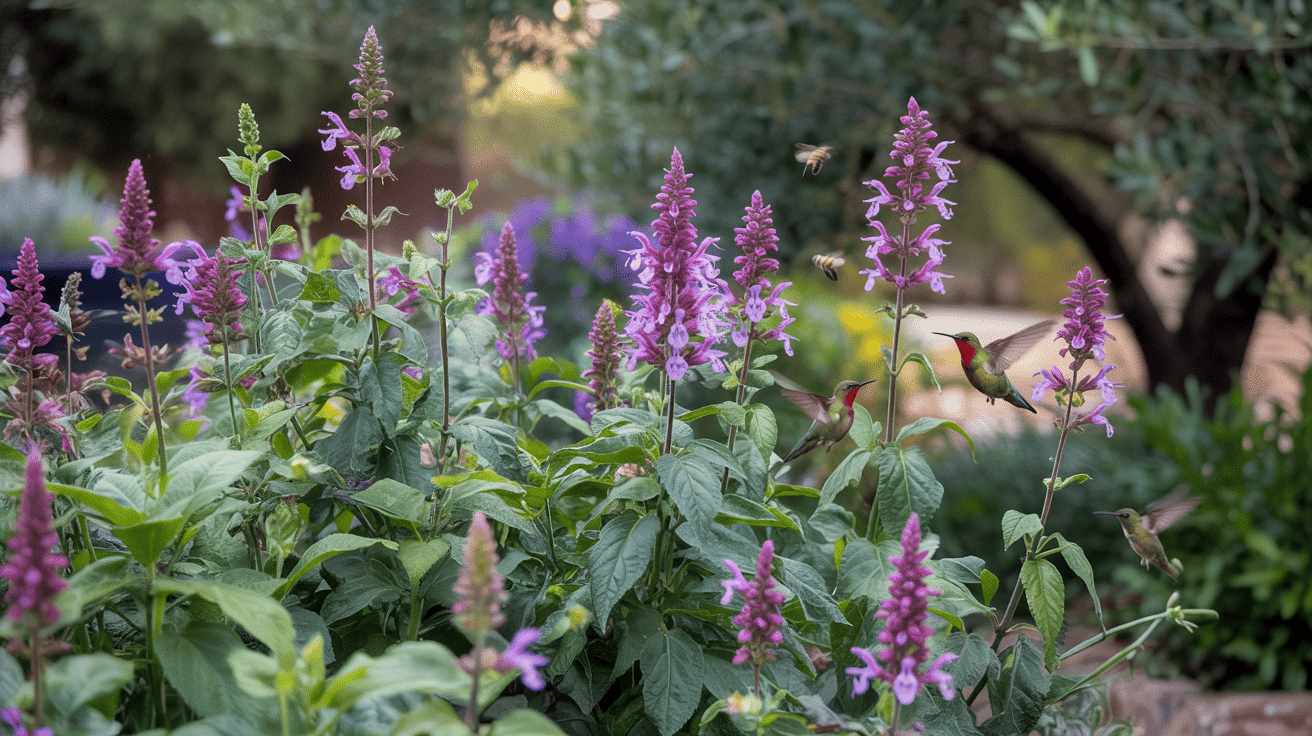
Mediterranean salvias produce tall spikes of tubular flowers that attract hummingbirds and butterflies. These perennials offer extended blooming periods and handle heat and drought better than most flowering plants.
- Climate: Varies by species, most hardy in zones 7-10.
- Blooming Months: Spring through fall with deadheading.
- Appearance: Textured green or gray-green leaves with colorful flower spikes.
- Gardening Strategy: Deadhead regularly for continuous blooms. Cut back by one-third in late winter. Choose heat-tolerant species like Salvia greggii for the hottest areas. Space properly for good air circulation. Water deeply but infrequently once established.
14. Thyme (Thymus Vulgaris)
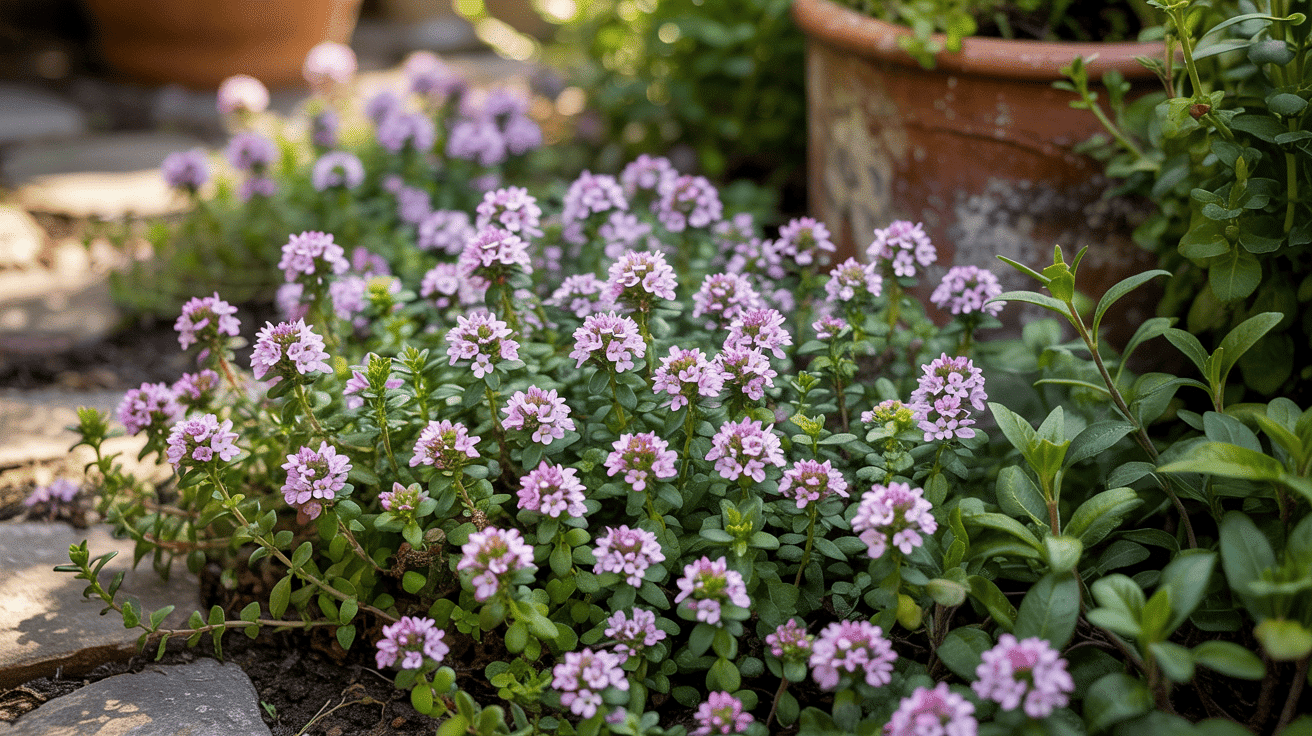
Thyme creates low carpets of tiny aromatic leaves topped by small but abundant flowers. This versatile herb serves as both groundcover and culinary plant while requiring minimal water and care.
- Climate: Hardy in zones 4-9 with excellent drought tolerance.
- Blooming Months: Late spring through summer.
- Appearance: Tiny oval leaves with clusters of small white, pink, or purple flowers.
- Gardening Strategy: Plant in rock walls and between stepping stones. Harvest before flowering for strongest flavor. Divide clumps every 3 years to prevent woody centers. Excellent groundcover for slopes and dry areas. Combine with other Mediterranean herbs for themed gardens.
15. Gazania (Gazania Rigens)
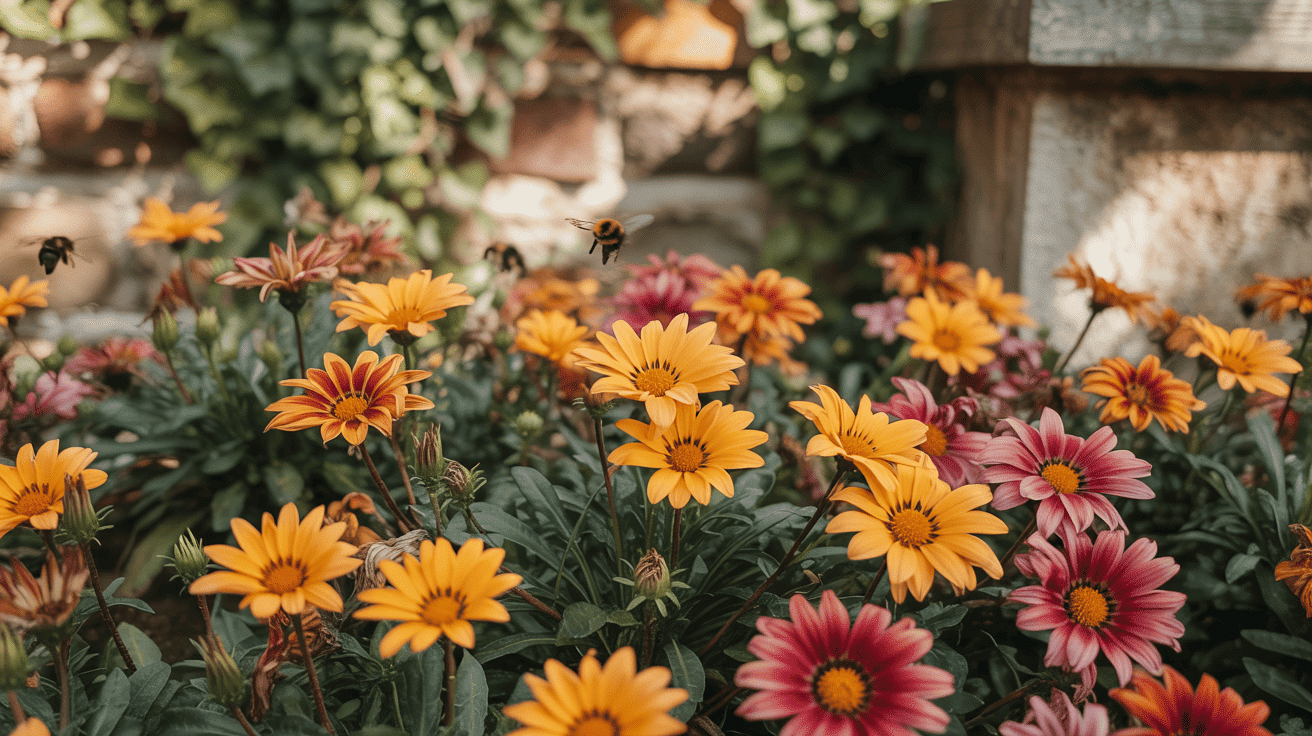
Gazania produces large daisy-like flowers that open in sunshine and close at night or during cloudy weather. These drought-tolerant perennials handle coastal conditions and poor soil extremely well.
- Climate: Best in zones 9-11, grown as annuals elsewhere.
- Blooming Months: Spring through fall with peak summer blooming.
- Appearance: Gray-green or silver leaves with large colorful daisy-like flowers.
- Gardening Strategy: Deadhead spent flowers to encourage more blooms. Divide clumps in spring in mild climates. Perfect for coastal gardens and sandy soils. Plant in mass plantings for best effect. Take cuttings in fall for overwintering in cold areas.
16. Iris (Iris spp.)
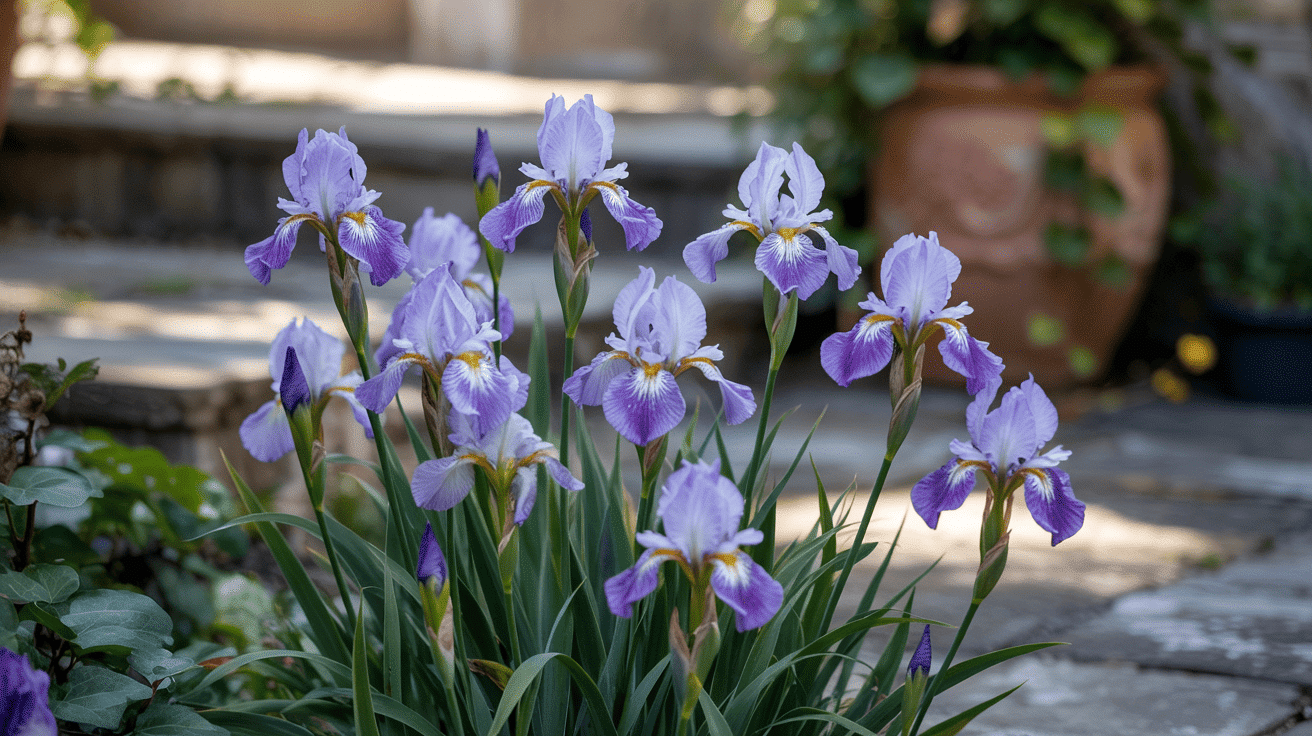
Mediterranean iris varieties produce elegant flowers on tall stems above sword-like foliage. These perennials handle drought conditions once established and provide vertical interest in garden design.
- Climate: Most varieties hardy in zones 6-9.
- Blooming Months: Spring to early summer depending on variety.
- Appearance: Tall sword-like leaves with distinctive three-petaled flowers.
- Gardening Strategy: Plant rhizomes just below soil surface in late summer. Divide crowded clumps every 3-4 years after flowering. Remove spent flower stalks but leave foliage until fall. Mulch lightly in winter in colder zones. Choose bearded iris varieties for best drought tolerance.
17. Artemisia (Artemisia spp.)
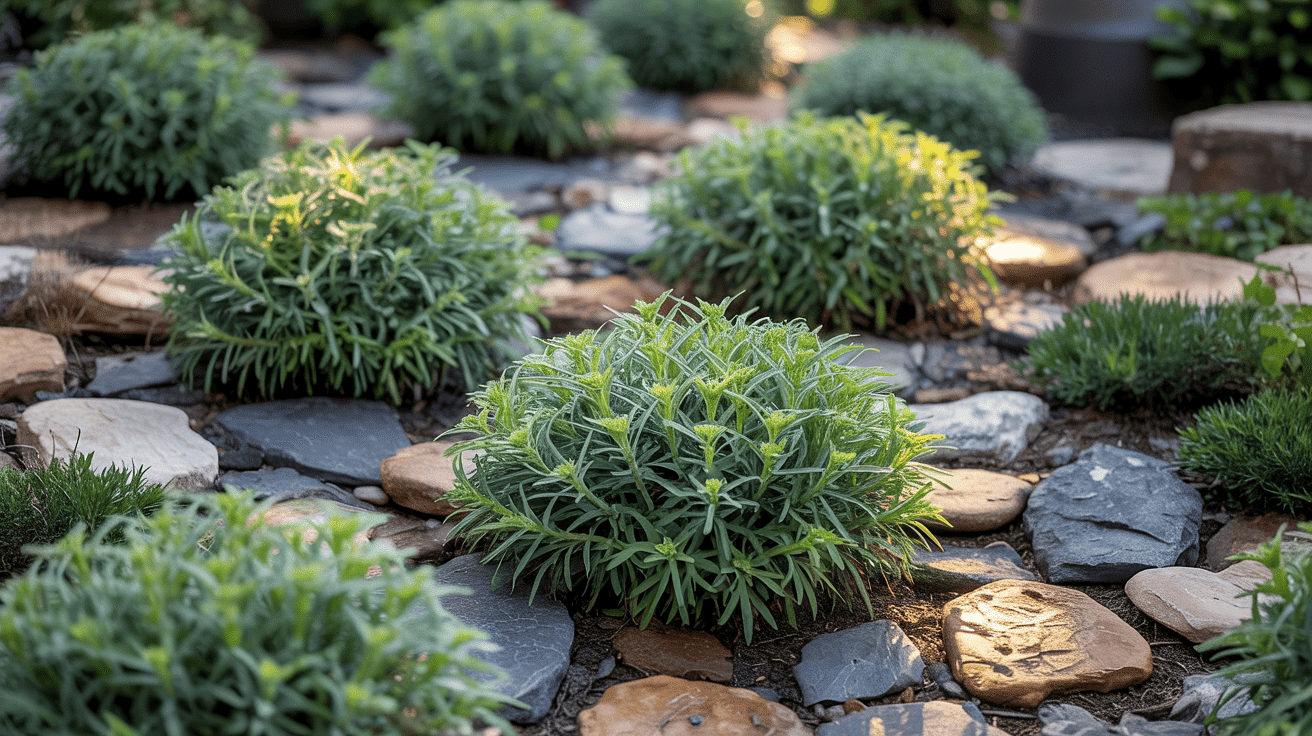
Artemisia provides silvery foliage that creates beautiful contrasts with colorful flowering plants. These drought-tolerant perennials maintain their attractive appearance throughout the growing season with minimal care.
- Climate: Hardy in zones 4-9 depending on species.
- Blooming Months: Late summer, grown primarily for foliage.
- Appearance: Finely divided silver-gray aromatic leaves.
- Gardening Strategy: Pinch flower buds to maintain foliage quality. Cut back hard in late winter to encourage fresh growth. Excellent companion for colorful perennials. Divide spreading types every few years. Use as natural moth deterrent when dried.
18. Globe Thistle (Echinops Ritro)
Globe thistle produces distinctive spherical blue flower heads on tall stems above spiky foliage. This drought-tolerant perennial attracts bees and butterflies while deer avoid the spiny leaves.
- Climate: Hardy in zones 3-8 with excellent drought tolerance.
- Blooming Months: Midsummer through early fall.
- Appearance: Spiny blue-green leaves with round steel-blue flower heads.
- Gardening Strategy: Cut flowers just before full opening for best dried flowers. Plant in back of borders due to height. Self-seeds moderately – remove unwanted seedlings. Excellent for wildlife gardens. Stake tall varieties in windy locations.
19. Sea Holly (Eryngium spp.)
Sea holly creates architectural interest with its spiny bracts surrounding small flower heads. This drought-tolerant perennial handles coastal conditions and poor soil while providing unique texture.
- Climate: Hardy in zones 4-8 depending on species.
- Blooming Months: Summer months.
- Appearance: Spiny silver-blue foliage with distinctive cone-shaped flower heads.
- Gardening Strategy: Never transplant once established due to deep taproot. Start from seed or young plants only. Excellent for coastal and exposed sites. Cut flowers for dramatic dried arrangements. Self-seeds in suitable conditions.
20. Celosia (Celosia Argentea)
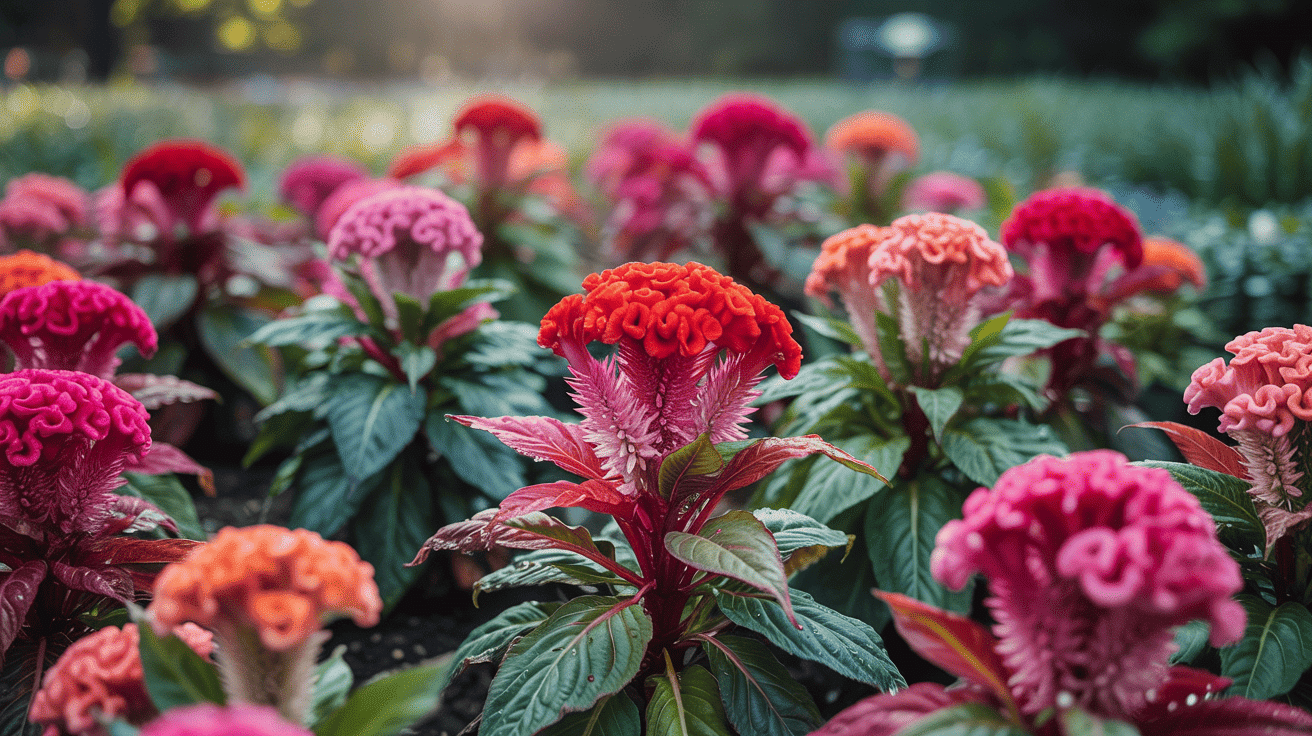
Celosia produces distinctive feathery or cockscomb-shaped flower heads in bright colors. This heat-loving annual thrives in hot summer conditions and provides long-lasting cut flowers.
- Climate: Heat-loving annual that prefers hot summer weather.
- Blooming Months: Summer through fall.
- Appearance: Broad green leaves with feathery or crested flower heads.
- Gardening Strategy: Start from seed indoors 6-8 weeks before last frost. Plant out after soil warms thoroughly. Water at soil level to prevent stem rot. Harvest flowers at peak color for drying. Excellent for hot, sunny borders where other annuals fail.
21. Blanket Flower (Gaillardia spp.)
Blanket flower produces daisy-like blooms in warm colors that attract butterflies and handle extreme heat. These drought-tolerant perennials bloom continuously through summer with minimal care.
- Climate: Hardy in zones 3-10 with excellent heat tolerance.
- Blooming Months: Late spring through fall.
- Appearance: Gray-green foliage with red and yellow daisy-like flowers.
- Gardening Strategy: Deadhead regularly for continuous blooms through frost. Divide clumps every 2-3 years to maintain vigor. Excellent for naturalized areas and prairie gardens. Avoid rich soil, which causes weak, floppy growth. Self-seeds readily in suitable conditions.
Conclusion
Mediterranean flowers offer the perfect solution for gardeners tired of watching plants struggle in hot, sunny conditions. These hardy varieties not only survive but flourish where other flowers fail, bringing months of color with minimal effort.
From lavender’s soothing fragrance to bougainvillea’s bold displays, these plants prove that you don’t need constant watering and maintenance to create a beautiful garden. They’ve spent centuries adapting to harsh conditions, making them ideal for today’s busy gardeners who want maximum impact with minimal work.
Your sunny garden doesn’t have to be a source of frustration anymore. Start with a few of these Mediterranean varieties this fall, and watch as your outdoor space becomes the colorful, low-maintenance retreat you’ve always wanted.
Ready to begin your Mediterranean garden? Choose three flowers from our list and plant them this season!



